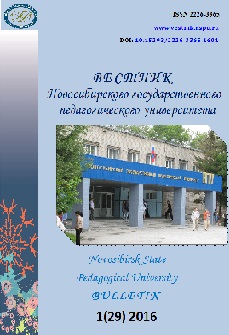Изменение ЭЭГ показателей у студентов, занимающихся спортом, после однократной
и продолжительной низкочастотной аудиовизуальной стимуляции
Change of the students’ EEG parameters engaging in athletics, after single and multiple low-frequency audiovisual stimulation
Author(s): Mihail Sergeevich Golovin , Natalia Vladimirovna Balioz, Sergei Georgievich Krivoshchekov, Roman Idelevich AizmanSubject(s): Higher Education
Published by: Новосибирский государственный педагогический университет
Keywords: Biology; morphology; physical activity; audiovisual aids; audiovisual stimulation; students; athletes; electroencephalographic activity
Summary/Abstract: The purpose of this study was to investigate the electroencephalographic (EEG) changes in students engaged in sports, after a single and continuous low-frequency audiovisual stimula-tion (AVS) in the regime of rhythmic stimulation of 3-13 Hz and a duration of 25 minutes. We examined the young man of 18-23 years old, students of NSPU engaged in athletics and special-izing in middle-distance running, having first qualified sports category and candidates for mas-ter of sports. The purpose of this study was to investigate the electroencephalographic (EEG) changes in students-athletes after single and course of low-frequency audiovisual stimulation (AVS). After 20–22 AVS sessions an alterations of the EEG parameters were observed compared to the control (power increase of the theta rhythm and alpha-1 subrange, capacity suppression of the alpha rhythm in response to the eye opening reaction). The particular characteristic of a single AVS was a significant decrease in the power of theta rhythm, decrease of the desynchro-nization reaction of alpha-1 waves and increase of alpha-2 waves of activation reaction. After the AVS course the increase of number and appearance of the new correlations between EEG parameters were marked, accordingly to Bechtereva’s ideas about increasing resistance of the organism to the internal and external effects. The described data confirm the ability of the hu-man’s brain to wave entrainment, that can be used to change the functional state and a more successful recovery after exercise.
Journal: Вестник Новосибирского государственного педагогического университета
- Issue Year: 6/2016
- Issue No: 1
- Page Range: 131-140
- Page Count: 10
- Language: Russian

